Missing Barapukuria Coal: It’s all system loss
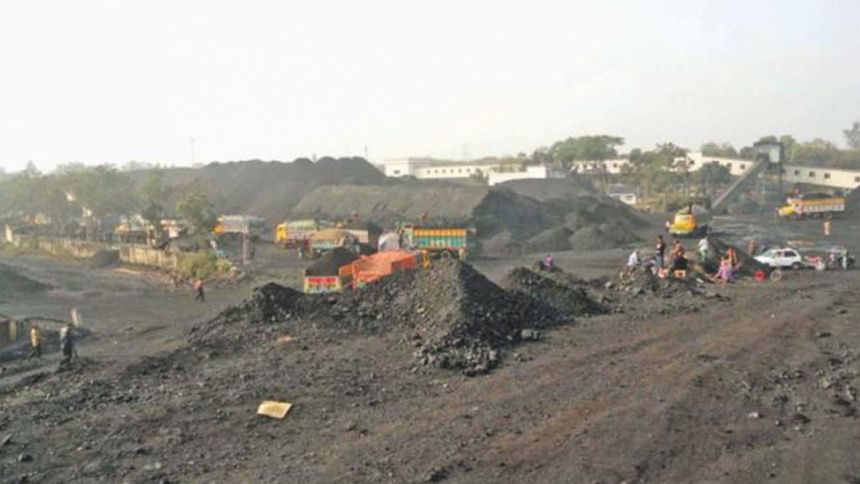
Some 1.48 lakh tonnes of coal disappeared from the stack yard of state-run Barapukuria Coal Mining Company Ltd (BCMCL) because of the system loss in production, handling and marketing since its inception more than a decade ago, an expert panel found.
The missing coal accounted for 1.42 percent of the total 1.0166 crore tonnes produced at the mine between 2005 and July 21, 2018.
There could be 1 percent to 3 percent system loss in production and marketing stages, according to the findings of the expert committee formed by Petrobangla after the news of the missing coal surfaced.
“There is clear evidence of the system loss -- from coal extraction to marketing,” the committee report said.
The committee identified the reduction of moisture as the main factor behind the loss. As coal is stockpiled under open sky, it loses a significant amount of moisture and ash contents and hardness.
As the stack was way higher than it should have been, coal faced spontaneous burning from February to June, and its volatile materials/fixed carbon/moisture is lost, reducing the weight, read the report.
For the loss, the committee also blamed rainwash, blowing away of particles by wind or storm and spillage during transportation or handling of coal.
The report, however, said it was difficult to determine the exact system loss as the inventory of extracted coal has not been done since the production began.
Earlier, an internal probe committee of Petrobangla, the parent company of BCMCL, put the system loss at 1.42 percent.
Mortuza Ahmad Faruque, a former managing director of state-run Bangladesh Petroleum Exploration (Bapex), said it was an administrative mistake on the part of BCMCL as it did not record the system loss in line with the international standard from the very beginning.
The findings from the technical expert panel came as the state-run mining company in Parbatipur of Dinajpur has been trying to find out how the coal disappeared from the highly protected yard.
It caused a huge hue and cry, leading to suspension of senior officials and filing of a case against nearly two dozen people, including seven former managing directors of the mining company.
A charge sheet prepared by the Anti-Corruption Commission (ACC) put the missing coal’s figure at 1.48 lakh tonnes. The ACC prepared the charge sheet against 23 people, saying they misappropriated the coal involving Tk 243 crore.
HOW IT ALL BEGAN
The matter of the missing coal came to light on July 17, 2018 when a board member of Bangladesh Power Development Board (BPDB) visited the coal yard of BCMCL to find out whether the yard had enough coal to help run the three units of the power plant.
The plant, with a combined capacity of 525 megawatts of power, had to be shut down due to coal crisis. The state-run BPDB is the biggest coal consumer of BCMCL.
The coal yard was supposed to hold 1,47,000 tonnes in July 2018 but only 3,000-tonne coal was found.
When it surfaced in the media, the mining company filed a case with Parbatipur Police Station on July 24 alleging that 144,000 tonnes of coal had disappeared between September 2005 and July 2018. It accused 19 people.
According to the case statement, the accused officials, through mutual understanding, had caused the coal to disappear.
Abu Hena Ashiqur Rahman, ACC deputy director in Dinajpur, submitted the charge sheet before the Senior Special Judge’s Court, on behalf of Shamsul Alam, deputy director at the ACC headquarters and also the investigation officer of the case, on July 24.
A hearing on whether the charge sheet would be accepted or not is due for September 15 (today), said Mohammad Omar Faruque, a public prosecutor, who is representing the ACC in the case.
The ACC has prepared a charge sheet against 23 people, which included BCMCL’s former managing directors Md Mahbubur Rahman, Md Abdul Aziz Khan, Khurshidul Hasan, Kamruzzaman, Md Aminuzzaman, SM Nurul Aurangzeb and Habib Uddin Ahmed.
On July 19 last year,Petrobangla formed a three-member probe committee headed by Md Kamruzzaman, director for operation and mines at Petrobangla.
It found that 1.02 crore tonnes of coal was produced from August 10, 2005 to July 21, 2018 at the coal mine, and 1 crore tonnes of coal was used, bringing the shortage to 144,525 tonnes.
The shortage accumulated from the beginning of the commercial operation, the report said. It blamed the system or technical loss for the shortage and recommended further investigation.
TECHNICAL EXPERT COMMITTEE
On August 28, 2018, Petrobangla formed a seven-member committee, headed by Md Mahbub Sarwar, director for production sharing contract (PSC) at Petrobangla, and tasked it with finding out the system loss from production to marketing.
Other committee members include Chowdhury Quamruzzaman, professor of geology at Dhaka University; Md Shofiqul Islam, professor of petroleum and mining engineering at Shahjalal University of Science and Technology; Md Maqbul-E-Elahi, a former director of Petrobangla; AKM Shamsuddin, a former managing director of state-run Pashchimanchal Gas Company Ltd; Md Akbar Ali, director for geology at the Geological Survey of Bangladesh; and SM Habibur Rahman, general manager for engineering of Petrobangla.
The committee was restructured on September 27, 2018 after Mahbub Sarwar went on post-retirement leave. Md Kamruzzaman, director for operations and mines at Petrobangla, was made the convener of the reconstituted committee.
It submitted the report on November 20.
Chowdhury Quamruzzaman, also a mining expert, said the expert committee has found system loss from the production to marketing.
System loss is acknowledged across the world. It happens in other sectors in Bangladesh, such as gas, power and water, he said.
“So, if we consider the system loss, then it is not a theft,” he told The Daily Star on Thursday.
Former Bapex MD Mortuza Ahmad Faruque echoed the view of Prof Quamruzzaman.
“This has happened because of the system loss. It beggars belief that such a huge amount of coal would just disappear from the yard,” he said.
It is well acknowledged that if coal is stockpiled under open sky day after day, small particles of coal would be blown away by wind or storm. Grain-size coal may be washed away during rains. Coal also faces internal combustion, he added.
Besides, when coal is carried through the conveyer belt from the yard to the power plants, some coal gets ground up when the belt shakes.
Petrobangla officials declined to make any comments.
The BCMCL management believes this was an accumulated loss of coal, which resulted from non-measuring at each reporting date after extraction as the weight of coal decreases with time due to reduction in moisture, internal burning and other related issues, the annual report of the company for fiscal 2017-18 said.
When enquired about the security of the yard, the BCMCL authorities told the expert committee that the yard is located over 17 acres of land and there is only one entry and exit gate.
The yard is enclosed by an eight-foot-high boundary wall and there is another three-foot high barbed-wire fence on top of it.
There are five watch towers from where 12 ansar personnel and three security guards watch the yard in three shifts. Closed-circuit TV cameras have been installed for surveillance. The stack yard is a key point installation (KPI).

 For all latest news, follow The Daily Star's Google News channel.
For all latest news, follow The Daily Star's Google News channel. 

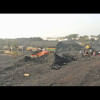
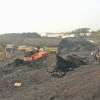
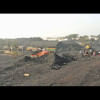



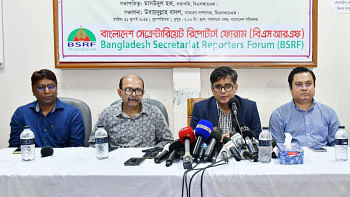
Comments